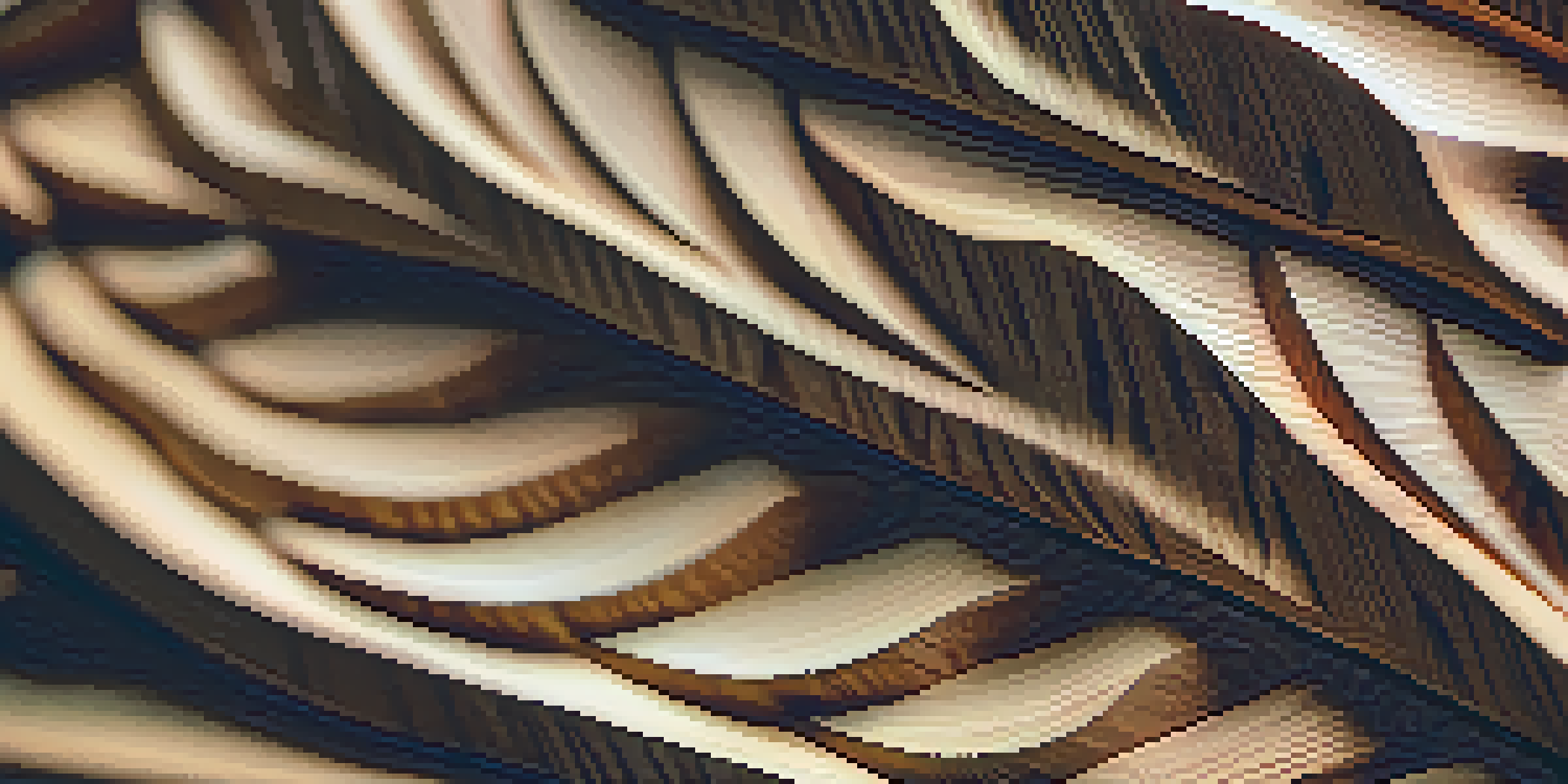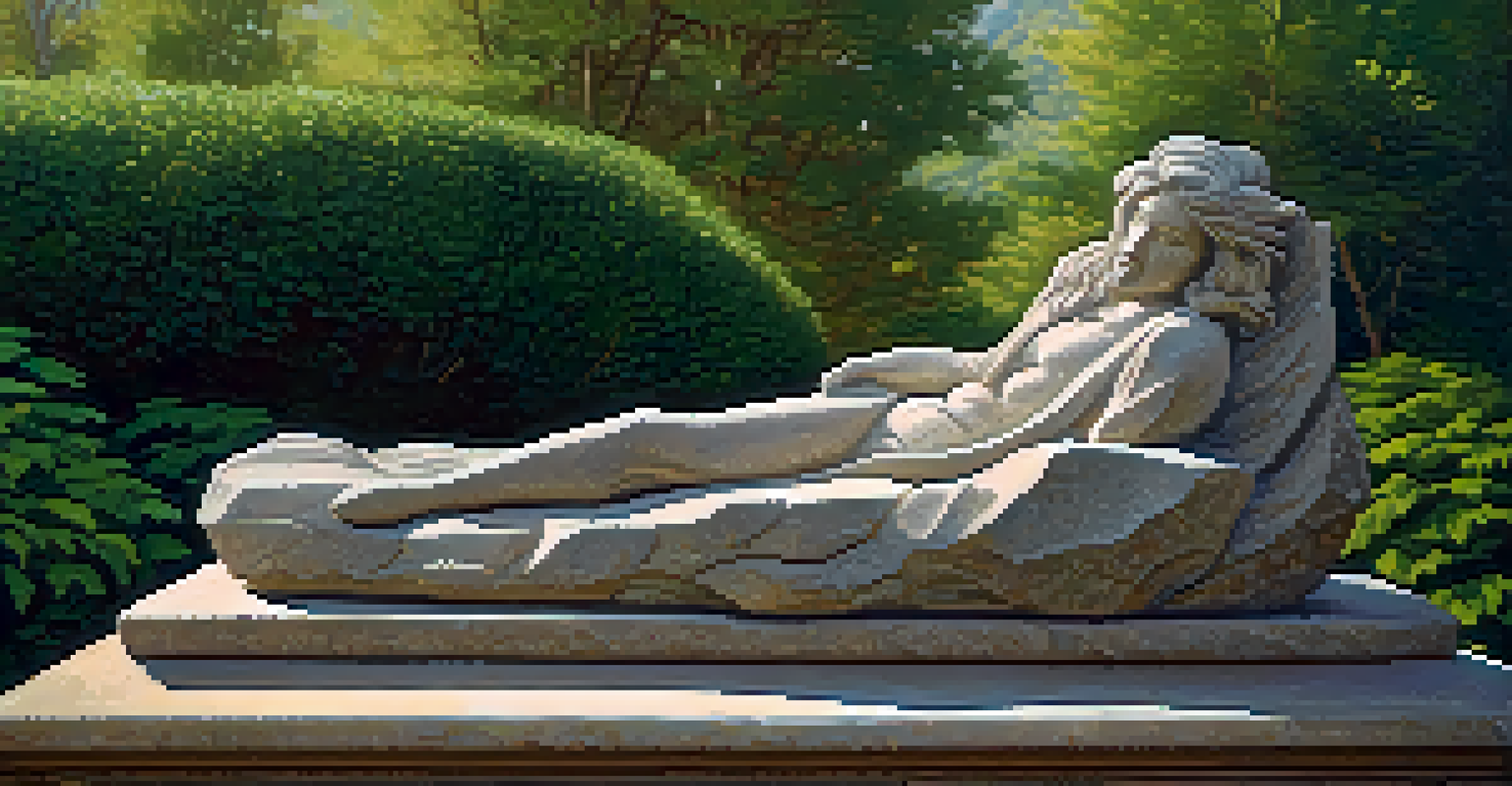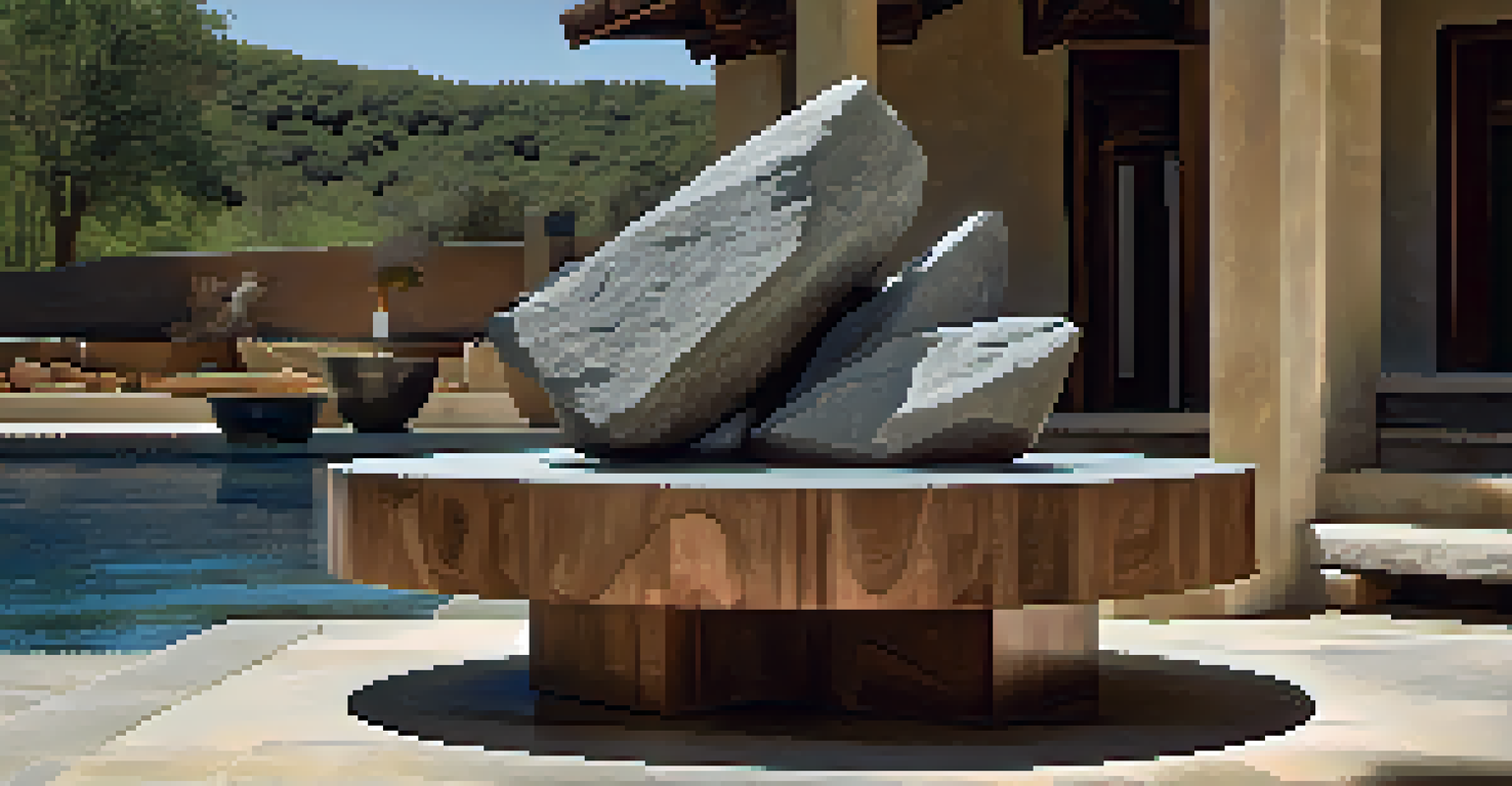The Role of Texture in Stone and Wood Carving

Understanding Texture: The Heart of Carving
Texture is a fundamental aspect of both stone and wood carving, adding depth and character to artistic creations. It influences how light interacts with the surface, enhancing visual appeal and emotional impact. Think of texture as the personality of the piece; it tells a story that smooth surfaces simply cannot convey.
Every piece of art is a reflection of the artist's soul, and texture is the language through which that soul speaks.
In essence, texture transforms a flat, lifeless surface into something that invites touch and sparks curiosity. Whether it’s the rough bark of a tree or the polished finish of marble, texture breathes life into materials. This is why artists meticulously consider texture during their creative process.
Furthermore, texture can evoke specific emotions or reactions from viewers. For instance, a jagged, raw stone surface might communicate strength and resilience, while a smooth, flowing wood finish can suggest warmth and comfort. Understanding these nuances is crucial for any carver aiming to connect with their audience.
The Techniques Behind Texturing in Stone Carving
Stone carving techniques vary widely, but they all share the common goal of creating texture. Tools like chisels and hammers are essential for shaping and detailing, allowing artists to carve intricate designs. Each strike can add layers of texture, from subtle grooves to bold patterns that catch the eye.

Another technique involves the use of abrasives to refine the surface. By sanding or polishing the stone, carvers can create a contrast between rough and smooth areas, enhancing the overall visual texture. This interplay draws attention and invites viewers to explore the piece more closely.
Texture Enhances Artistic Expression
Texture adds depth and character to carved pieces, transforming flat surfaces into engaging works of art.
Moreover, different types of stone yield varying textures. For example, granite's natural flecks can add intrigue, while softer stones like limestone allow for more detailed carvings. Understanding the properties of each stone is key to achieving the desired texture and effect in the final artwork.
Exploring Wood Carving: The Role of Grain and Finish
Wood carving offers a unique opportunity to play with natural textures, primarily dictated by the grain of the wood itself. Each type of wood has its own distinct grain patterns, which can greatly influence the final appearance of a carved piece. For instance, oak features prominent grain lines, while maple boasts a smoother finish.
Art is not what you see, but what you make others see, and texture is the bridge to that vision.
Carvers often choose their wood based on the texture they wish to achieve. For example, softer woods allow for more intricate details, while hardwoods provide durability and a striking finish. The choice of wood directly impacts not only the design but also the tactile experience of the piece.
Finishing techniques, such as oiling or varnishing, further enhance the texture of wood carvings. These finishes can highlight the grain, adding richness and depth to the piece. A well-finished wood carving can feel as good as it looks, inviting touch and admiration from onlookers.
Combining Textures: Blending Stone and Wood in Art
Many contemporary artists embrace the challenge of combining stone and wood in their work, creating a striking contrast of textures. This blend can highlight the unique qualities of both materials, resulting in pieces that are visually dynamic and rich in storytelling. The juxtaposition of smooth wood against rough stone can evoke a sense of harmony and balance.
When blending these materials, artists must consider how each texture interacts. For instance, a smooth wooden base can provide a grounding element for a rugged stone sculpture. This interplay not only enhances the aesthetic but also invites viewers to appreciate the relationship between the two materials.
Caring for Carvings Preserves Value
Proper maintenance of carved pieces is essential for preserving their texture and overall beauty, ensuring they remain cherished heirlooms.
Additionally, the process of combining textures can inspire innovative design choices. Artists might experiment with carving techniques that allow the two materials to complement each other, creating a cohesive piece that celebrates the beauty of both stone and wood. This artistic fusion opens up new avenues for expression and creativity.
The Emotional Impact of Texture in Carving
Texture in carving isn’t just about aesthetics; it deeply influences the emotional connection viewers have with a piece. The tactile nature of textured surfaces can evoke feelings of nostalgia, comfort, or even intrigue. When people encounter a carved piece, their hands often instinctively reach out to touch it, seeking a sensory experience.
For example, a rough, weathered surface may remind viewers of nature’s resilience and beauty. In contrast, a smooth, polished finish might evoke feelings of serenity and calmness. This emotional resonance is what makes texture such a powerful tool in the hands of a skilled artist.
Moreover, the emotional response to texture can vary based on individual experiences and cultural backgrounds. This diversity allows artists to create pieces that resonate on multiple levels, engaging a wider audience. Ultimately, the role of texture in carving is about forging connections—between the artist, the artwork, and the viewer.
Maintaining Texture: Care for Carved Pieces
Taking care of carved pieces is essential to preserving their texture and overall beauty. Different materials require unique maintenance approaches; for instance, stone carvings may need occasional cleaning with a soft brush to remove dust, while wooden pieces often benefit from regular oiling to maintain their finish. This care ensures that the textures remain vibrant and appealing over time.
Additionally, the environment in which a carved piece is displayed can significantly impact its texture. Wood, being organic, is sensitive to humidity and temperature changes, which can affect its finish and grain. On the other hand, stone is generally more resilient, but can still suffer from exposure to harsh elements. Proper placement and care are crucial for longevity.
Future Innovations in Carving Arts
Advancements in technology and sustainable materials are paving the way for innovative texturing techniques that redefine traditional carving.
Investing time in maintenance not only preserves the texture but also enhances the piece's value. Well-maintained carvings can be cherished heirlooms, passed down through generations, each carrying the story of its creator and the care it has received. This connection between texture and preservation highlights the importance of respecting and nurturing art.
The Future of Texture in Carving Arts
As technology evolves, so does the exploration of texture in carving. New tools and techniques, such as CNC machines, allow artists to experiment with intricate textures that were previously impossible to achieve by hand. This blend of traditional craftsmanship and modern technology opens exciting avenues for creativity.
Moreover, the growing interest in sustainable materials has led artists to explore alternative options for carving. Reclaimed wood and eco-friendly stone sources are becoming popular, encouraging innovative textures that reflect a commitment to environmental stewardship. This trend not only enhances the artistic experience but also resonates with a socially conscious audience.

Ultimately, the future of texture in carving arts is bright and full of potential. As artists continue to push boundaries and redefine traditional techniques, we can expect to see a fascinating evolution of texture that shapes the way we experience and appreciate carved art. The journey of texture in carving is ever-changing, reflecting broader cultural shifts and the enduring human desire for connection through art.